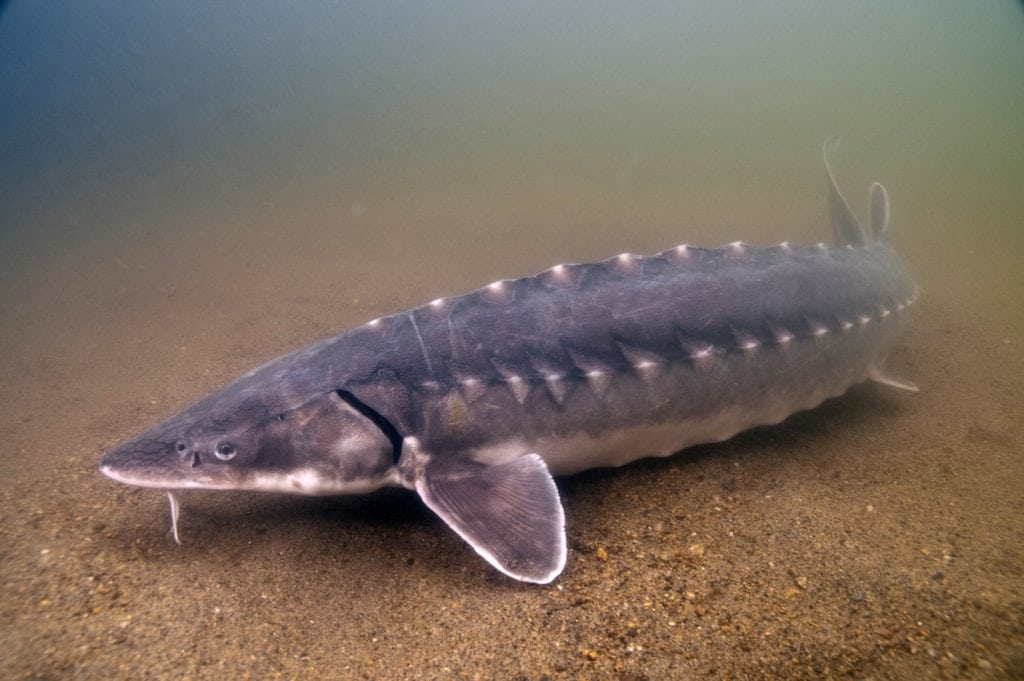Sturgeons are long-lived, late maturing fishes. Their average lifespan is 50 to 60 years, and their first spawn does not occur until they are around 15 to 20 years old.
Sturgeons have bony plates (scutes) covering the head and five longitudinal rows of similar plates along the body. The tail fin is heterocercal, the upper lobe being longer than the lower. Their mouths are positioned ventrally and have 4 barbels.
Most sturgeons are anadromous bottom-feeders which migrate upstream to spawn but spend most of their lives feeding in river deltas and estuaries. Their diet composed of shells, crustaceans and small fish. They migrate upstream to spawn but spend most of their lives feeding in river deltas and estuaries.

Many sturgeon leap completely out of the water, usually making a loud splash which can be heard half a mile away on the surface and probably further under water. It is not known why they do this, but suggested functions include group communication to maintain group cohesion, catching airborne prey, courtship display, or to help shed eggs during spawning.
Sturgeons are valued for their flesh, eggs, and swim bladder. Their flesh is sold fresh, pickled, or smoked. Caviar consists of the eggs, which are stripped from ripe females who are subsequently released.















